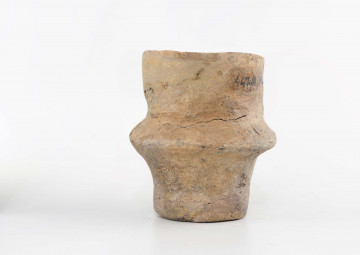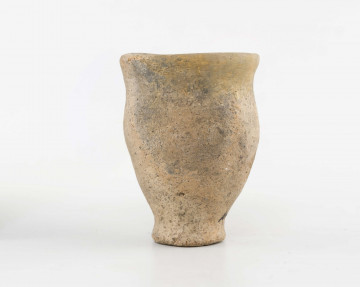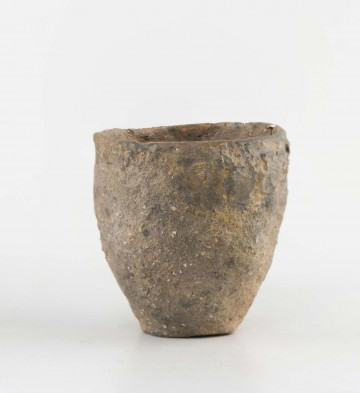
Small cup
National Museum in Lublin
Part of the collection: Archaeological monuments of the Lublin region
Almost half a century ago, in Bielsko village, in the Opole poviat, archaeologists from the Lublin Museum investigated a cemetery of the Lusatian culture from the Bronze Age (existing about 3 thousand years ago). Exploring the site, the researchers came across nearly one hundred graves. In one of them, number 30, they discovered a small clay bucket.
In that grave, the deceased was buried in a cremation ritual, where the body was cremated and then the remains - bones together with ashes - were placed in a clay vessel, covered with a bowl and buried in the cemetery. In addition to the vessel with the deceased, a clay cup and the bucket described by us were left as grave goods.
The dimensions of the vessel are inconspicuous; its height is less than 2 cm and the width of the spout is less than 5 cm. So, we can talk about a miniature scoop.
But why is the vessel so small?
Researchers of Lusatian culture sites put forward various theories concerning such vessels. They could have been, for example, children's toys or vessels modelled on much larger buckets found on numerous sites of this culture. They would then be a symbolic vessel imitating those used. There are of course many more possibilities for the use of such small vessels. However, only further progress in research, as well as specialist analyses of the sediment left in these vessels, will allow us to guess their real function.
Author / creator
Dimensions
cały obiekt: height: 1,7 cm
Object type
dish
Technique
firing
Material
clay
Creation / finding place
Owner
The National Museum in Lublin
Identification number
Location / status

National Museum in Lublin

National Museum in Lublin

National Museum in Lublin
DISCOVER this TOPIC
National Museum in Lublin
DISCOVER this PATH
Educational path